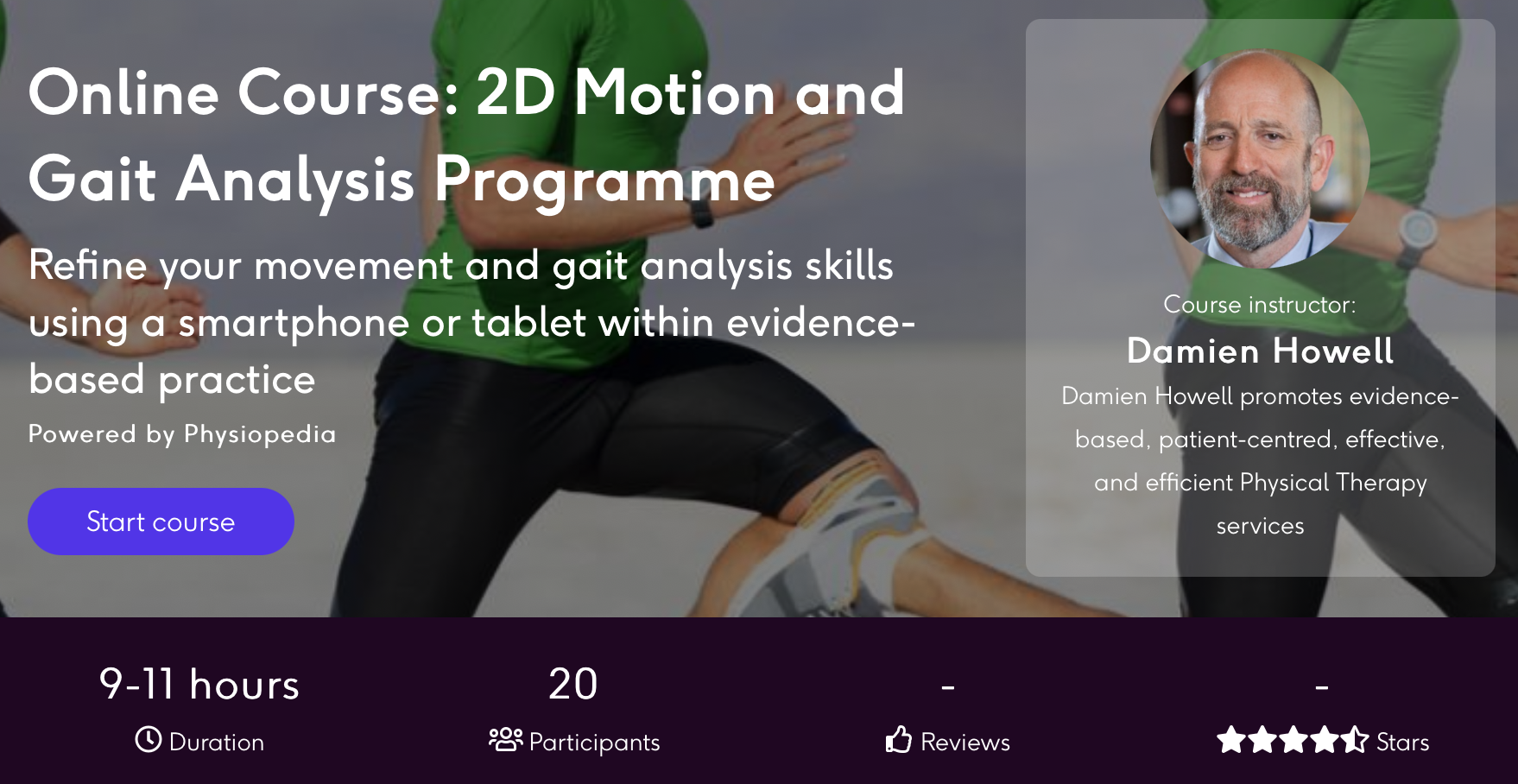You can take part in Damien Howell’s 2D Motion and Gait Analysis Programme now on Physioplus with a 25% discount!
There are numerous advantages for using 2D slow motion video analysis for management of movement disorders including increased accuracy; improved communication; increased engagement; and improved continuing education. Yet despite the clear value added to both diagnosis and treatment, particularly with movement system disorders, the tool is not being used as much as it should be.
Learn To Use 2D Video Gait Analysis
Studies by Craig Henley and colleagues conducted a survey which shows whilst 49% of American Orthopaedic and Sports Physiotherapists use 2D slow motion video analysis during clinical practice only a fraction use the tool regularly. This pales in comparison to the well-documented overuse of static imaging such as x-ray and MRI.
This is both surprising and saddening. By definition movement is dynamic and without using the correct diagnostic tools clinicians can misappropriate pain and dysfunction leading ineffective rehabilitation. Furthermore the complex nature of movement and rehabilitation is oversimplified to service users when they are shown a single static image which often goes part of the way to highlighting the cause of pain or dysfunction.
Cost and Accessibility – ‘Catch 22’
Perhaps the continued underuse of 2D video analysis is a legacy of a bygone era when both equipment availability and technical ability was both expensive and limited. Despite the numerous phone applications available which give clinicians immediate access to high quality slow motion gait analysis why isn’t the use in clinical practice higher than it is?
The barriers of cost and availability of equipment and skills have been replaced by others with arguably the most significant being the current disjointed and inconsistent integration video data into the electronic medical record system.
This “catch 22”, of having availability of technology but not the means of using is clinically because of information governance lags, is so commonplace in healthcare it is almost stereotypical. Yet there is something we can do about it. We are almost at a tipping point where the demand and utilisation of video analysis in the clinical setting warrants expending resources to modify electronic medical record systems to properly integrate video image data.
A Secondary Benefit – Reducing The Documentation Burden
Not only am I confident in the diagnostic capabilities of 2D video gait analysis, I am also confident that by using the tool clinicians can reduce the problematic burden written documentation has on clinician burnout. It’s estimated that almost half of clinician time is spent documenting rather than seeing patients. Something has to change and this is where I know proper video integration into the electronic patient record will save time. No longer will clinicians have to spend huge amounts of time writing out a written analysis of movement, they will instead be able to refer to video and spend more time on analysis and treatment.
Despite an increase in available time I still think it will be a while before 2D gait analysis rapidly becomes part of most clinicians diagnostic tool box. Whilst it’s not always the case, often when we pick up a new tool we put a different one down. To paraphrase Larry Benz, will 2D slow motion video analysis replace, displace, or augment current practice patterns in management of musculoskeletal pain syndromes?
Whilst I’m confident the answer is that 2D video gait analysis will augment our current practice I understand why others don’t feel as confident. That’s why I created my series of courses for Physioplus, so that I can help you become confident too.
To learn the skills you need to start performing 2D video gait analysis in clinic take part in Damien Howell’s new programme of courses available on Physioplus with a 25% discount.
